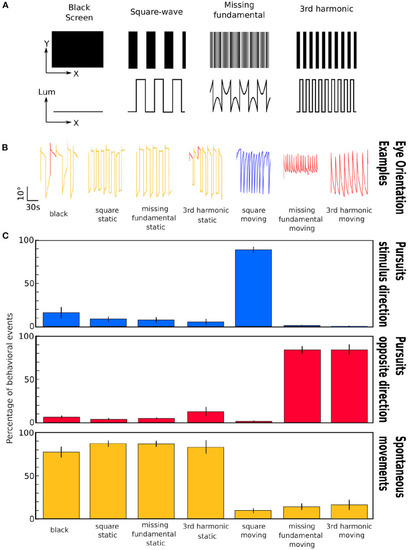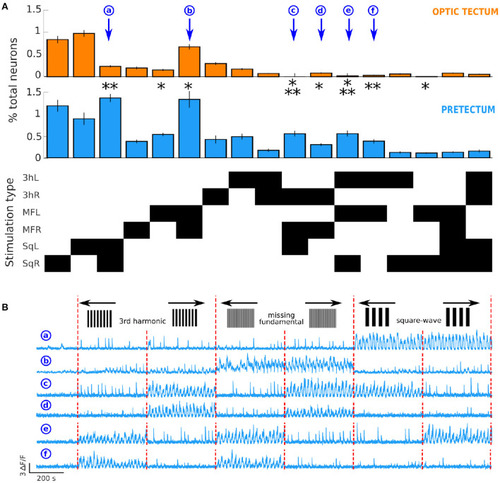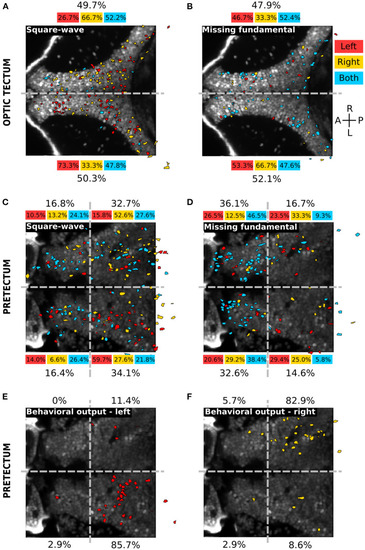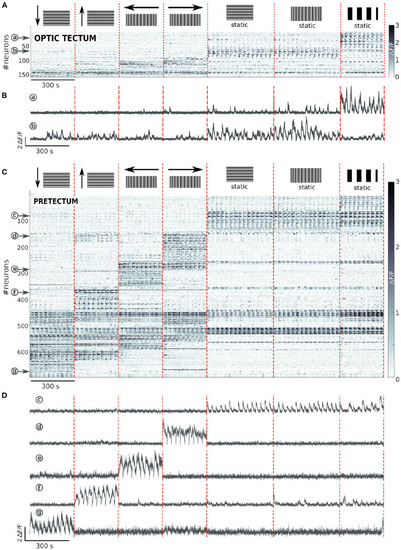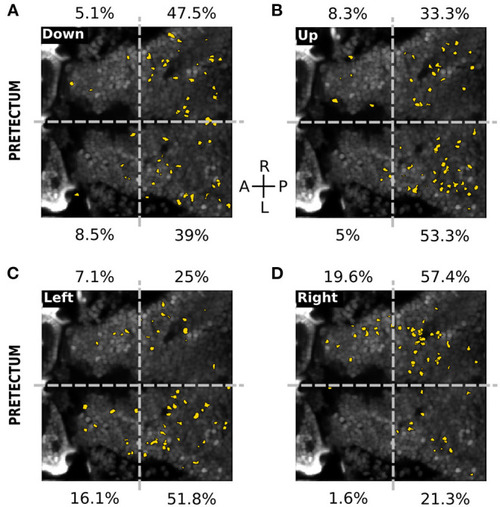- Title
-
Fourier Motion Processing in the Optic Tectum and Pretectum of the Zebrafish Larva
- Authors
- Duchemin, A., Privat, M., Sumbre, G.
- Source
- Full text @ Front. Neural Circuits
|
Representation of the different stimuli and induced eye movements. |
|
Tectal and pretectal neuronal representation of the visual stimuli. |
|
Differences in neuronal response types in the optic tectum and the pretectum. |
|
Spatial distribution of the different neuronal response types in the optic tectum and the pretectum. |
|
Tectal and pretectal neuronal representation of different directions of the missing-fundamental stimulus. |
|
Spatial distribution of neurons responding to the directions of the missing-fundamental signal in the pretectum. |

